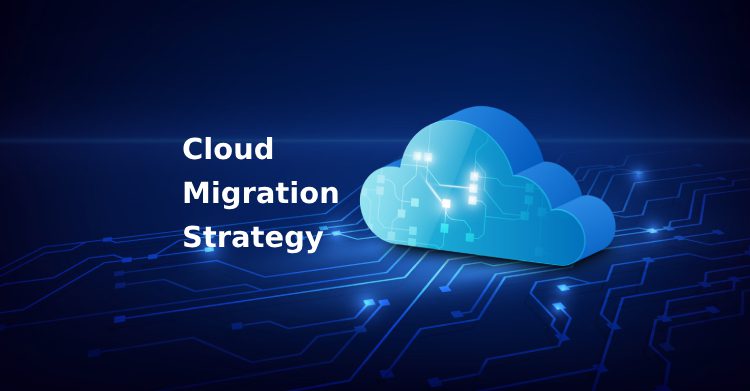
Blog
Cloud Data Migration – Adopting the Right Strategy and Best PracticesPosted by
Kanika Sharma on 03 Jan 2024
Businesses are increasingly recognizing the role of data in gaining competitive advantage. As they strive to harness the power of the cloud, data migration becomes a critical task that presents both challenges and opportunities. In this blog, we look into the complex world of cloud data migration and discuss the importance of adopting the right strategies and best practices. Addressing the complexities of transferring data from on-premises systems to cloud environments or from one cloud setup to another requires a nuanced approach that includes security, scalability, and efficiency considerations.
Embark on a journey with us to learn the key elements of a successful cloud data migration, enabling organizations to transition seamlessly while unlocking the full potential of cloud-era data.
What is a Cloud Migration Strategy and Why Do You Need One?
A cloud migration strategy can provide a comprehensive roadmap for organizations looking to move data, applications, and infrastructure to a cloud environment. This strategic framework is integral to navigating the complex migration process and ensuring a smooth and efficient transition. Here’s a closer look at the importance of a cloud migration strategy:
Minimizes Disruptions: A clear strategy helps minimize disruption to business operations by outlining a structured approach to migration, which reduces the risk of downtime and ensures continuity.
Optimizes Resource Utilization: Migration strategies help identify and optimize resource utilization, ensuring the cloud infrastructure meets your organization’s needs and goals.
Enhances Security Measures: Security is critical in a digital environment, and migration strategies include measures to improve data security during the transition, address potential vulnerabilities, and ensure compliance with industry regulations.
Cost Efficiency: By carefully planning and executing the migration process, you can control the costs associated with cloud adoption, prevent unexpected expenses, and optimize return on investment.
Different Types of Cloud Migration Strategies
Depending on your business environment, several cloud migration strategies are available. Here are six of the most popular and effective methods:
Rehosting (Lift and Shift):
Rehosting involves copying your entire existing infrastructure to the cloud. This quick migration approach suits businesses with low workload impact while still exploring a long-term strategy. It is particularly effective for infrastructure that relies heavily on virtual machines. However, the initial cost can be high.
Replatforming (Move and Improve):
Platform Reorganization, or Migration and Improvement strategy, requires minimal adjustments during migration to the cloud, making it easier to scale. This approach preserves the basic architecture of the application, making it suitable for enterprises planning to scale services and improve performance efficiency. However, it may not take full advantage of the cloud’s capabilities, leading to potential problems.
Repurchasing:
Repurchase involves moving to a cloud-based solution when certain aspects of the legacy architecture become difficult or costly to maintain. This type of migration is critical in scenarios such as internal customer relationship management (CRM) software. The disadvantage is that employees and users need to be trained on the new third-party system, which involves time and cost.
Refactoring:
Refactoring requires building the entire infrastructure from scratch, making it an excellent choice for companies aiming to leverage the cloud for autoscaling, serverless computing, and more. Achieving these benefits is challenging natively, but refactoring requires significant time and effort, making it the most expensive approach with long-term dividends.
Retirement:
This strategy involves eliminating or downsizing applications that are obsolete or no longer useful. If an application is deemed not worth moving to the cloud, retiring allows the business to focus on the most used and immediately valuable services. This migration also results in cost savings and improved safety.
Best Practices for Cloud Data Migration
The following best practices serve as guidelines for ensuring a seamless and secure transition with successful cloud data migration:
Design the Cloud Governance Framework:
Establish a strong governance framework to define roles, responsibilities, and policies for effectively managing cloud resources. Ensure alignment with organizational objectives and compliance with regulatory requirements.
Optimize the Network:
Conduct a thorough assessment of your network infrastructure to ensure it can handle the increased traffic associated with cloud data migration. Implement optimization strategies such as load balancing and content delivery networks to improve performance.
Properly Manage Software Licensing:
Verify and adhere to software application license agreements to prevent compliance issues during and after migration. Consider cloud-native alternatives to optimize licensing costs and promote scalability.
Monitor Cloud Usage:
Implement powerful monitoring tools to track resource utilization, identify performance bottlenecks, and resolve issues promptly. Establish key performance indicators (KPIs) to measure the success and efficiency of the migration process.
Be Organized:
Maintain detailed documentation of configuration, setup, and migration steps to facilitate troubleshooting and future optimization. Promote clear communication among team members to ensure everyone is fully informed and adheres to the migration plan.
What We Offer in Our Cloud Services?
At Gophers Lab, we’re proud to offer a comprehensive suite of cloud services to support enterprises in their Digital Transformation journey.
Get strategic insights with expert consultation to build a robust cloud adoption roadmap. Receive guidance on choosing the cloud solution that best suits your business needs.
Seamlessly transition to the cloud with our migration services, ensuring minimal disruption and optimized performance. Our experts handle the data migration process to achieve a smooth shift of workloads.
DevOps Automation Services: Our cloud services include cutting-edge DevOps automation to streamline your software development and IT operations. We provide a comprehensive set of tools and practices to enhance collaboration, automate workflows, and accelerate the development lifecycle.
Improve operational efficiency and cost-effectiveness by continuously optimizing cloud resources. Customize strategies to maximize performance and minimize unnecessary spending.
We proactively manage and monitor your cloud environment to ensure optimal performance and reliability. Our 24/7 support and maintenance services promptly resolve issues and keep your system running smoothly.
Security and Compliance:
Robust security measures protect your data and ensure compliance with industry regulations. Continuous security assessments and updates are performed to reduce risk and protect against evolving threats.
Final Words
As enterprises increasingly opt for digital transformation, adopting the right cloud data migration strategy is crucial. Achieving efficiency and agility requires a skilled approach and the utilization of appropriate technology driven by cloud consulting services.
At Gophers Lab, we demonstrate our commitment to excellence by providing exceptional cloud migration services that meet the diverse needs of businesses across industries. The best practices discussed in this blog are more than a guideline; they provide a roadmap for success in cloud data migration.
Share On
Tags
Cloud Data Migration
Cloud Migration Services
Highlights
Download Blog

Talk to Our Experts

Get in Touch with us for a Walkthrough





